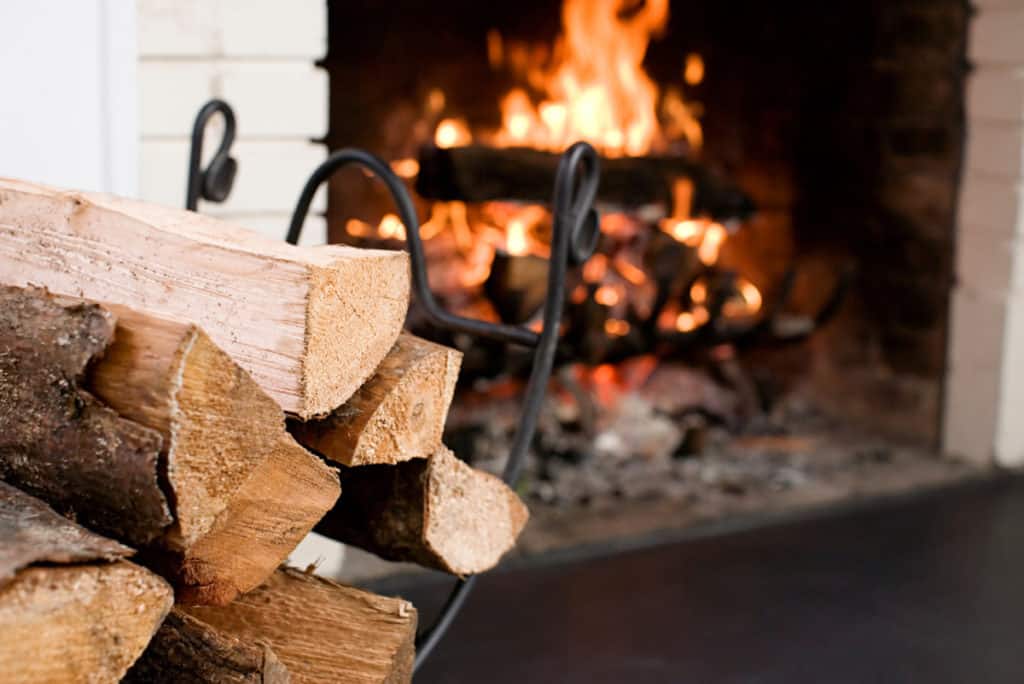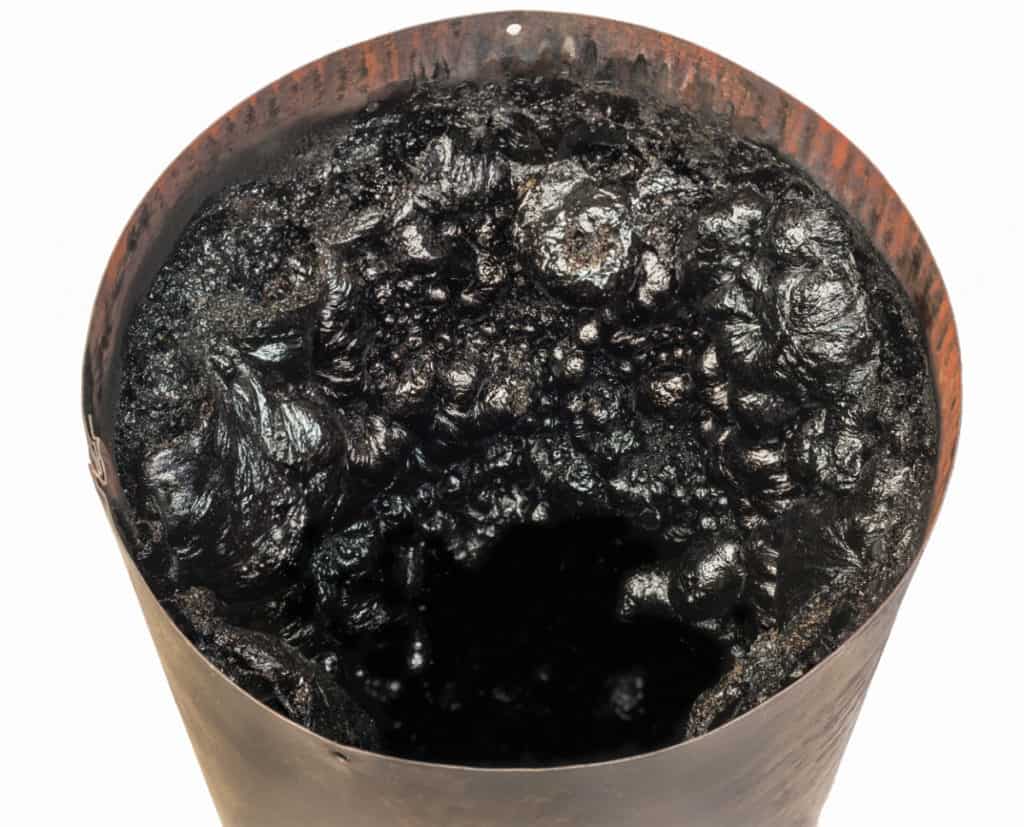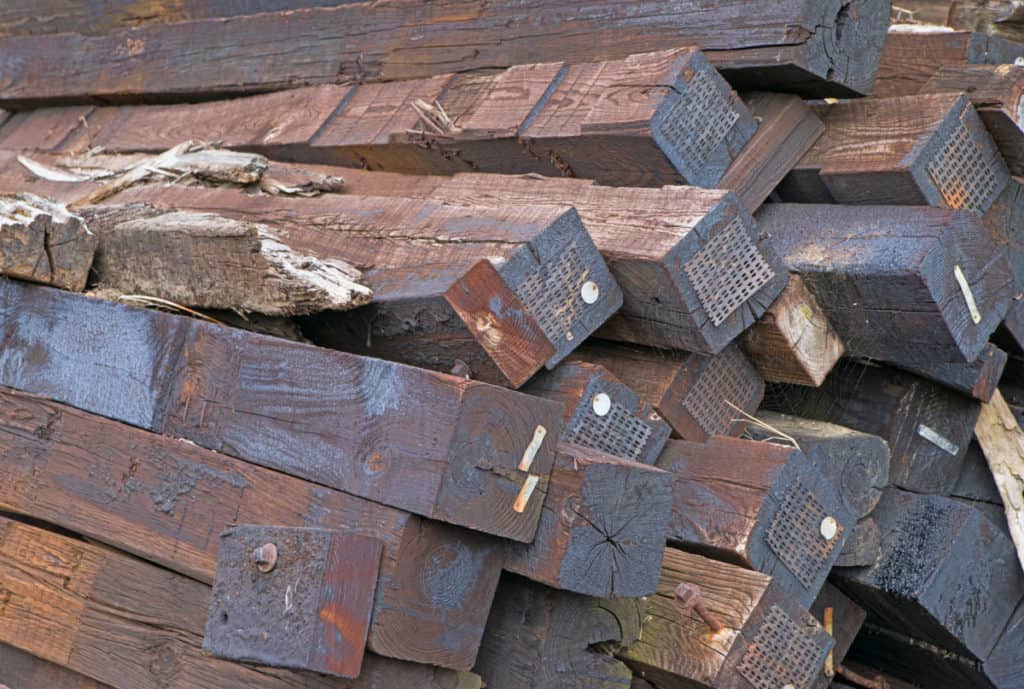
Since we have a lot of Ponderosa pine as our firewood, I wanted to know more about how it creates lots of creosote. So I did some reading and found out a few interesting facts.
It’s not entirely possible to avoid creosote when burning Ponderosa pine. However, just like with any other wood, there are steps you can take to minimize the buildup of creosote and soot in a woodstove, flue, fireplace, and chimney.
What helps to keep soot and creosote down in a wood stove or fireplace are hot fires but not the extreme. By using a dry and well-seasoned pine to get a fast hot burning fire started you will burn off any accumulated creosote before actually adding more dense wood to the fire for a longer burning fire.
The Real Truth About Creosote Build Up Isn’t Just From Burning Ponderosa Pine
Ponderosa Pine is considered a softwood along with any other conifer type tree versus deciduous trees that many are a hardwood such as oak, maple, and black locust. To this day there is a misconception about burning pine of any type in a wood stove or a fireplace. Because conifer trees are known for their heavy sap a myth is out there that this sap creates an excessive creosote build-up in a woodstove or fireplace chimney that can lead to a chimney fire. All woods have sap so I guess you could say this about any wood and creosote build-up. I’ve used pine in my wood stove for years with no issues and no chimney fire. With further research, I found that my suspicion to be true. The real reason for creosote buildup in the chimney isn’t from the type of wood you burn it’s these.
- Green wood of any species.
- Wet or Moist wood.
- A low heat fire.
Green, Wet, and Moist Wood
Wood not fully seasoned for at least one year can cause a creosote buildup. Woods that have more density may need to be dried longer than just a year. When green or wet wood has burned the heat of the fire first dries out the wood first which creates a lower temperature fire. A low-temperature fire causes the buildup of creosote in the stove and the stove pipe. This is true for wet or moist wood as well. Stack your wood someplace where it is out of the weather and stacked in such a way there is plenty of airflow.
A Low Heat Fire Causes Creosote
Another observation I’ve made is to make sure I have a really hot fire before turning down the dampers for the night. Otherwise, soot and creosote will buildup due to a low heat fire. Once I’m up the next morning I stoke the fire back to a roaring hot fire so as to burn off any accumulated creosote in the stove or stove pipe.

Three Stages of Creosote
First Stage: It’s flaky soot that is the easiest to control and keep clean by using a chimney brush.
Second Stage: Again it’s a flaky stage but they are hardened tar that is not easily brushed away as in the first stage.
Third Stage: This stage should be avoided if at all possible as it is a highly concentrated fuel that looks like tar. These are the ingredients that cause chimney fires intense enough to ignite combustible parts of a home, like the rafters.
TIP: The best prevention for creosote buildup is having your chimney cleaned at least annually preferably by a professional sweeper.
So, Can You Burn Ponderosa Pine in a Wood Stove?
As long as ponderosa pine is dry and well seasoned it can safely be burned in a wood stove. Clean the stove and chimney once a year to reduce any risk of creosote buildup.
Don’t listen to the nay-sayers who say the pitch from pine builds up too much creosote which increases the danger for a chimney fire. It’s about burning dry seasonal woods.
If you burn too much resin-soaked pine you will get a lot soot that can build up in your stove and your chimney. Read about this in my article titled, Is The Smoke From Fatwood Dangerous To My Chimney?
Seasoning Wood
A minimum time of six months is considered a season for drying some species of woods such as pines however a year would be a better length of time. Hardwoods such as oak, locust, maple, walnut can take at least one year and even two years for the denser hardwoods.
How Hot Does Ponderosa Pine Burn?
It burns 17.1 million BTUs of heat per cord, regardless of whether it’s in a wood stove or fireplace. A cord of wood is a tightly stacked pile of wood measuring four feet wide by four feet high and eight feet long. When calculated it equates to 128 cubic feet of space.
The Meaning of BTU
BTU means British thermal unit. Which is how wood heat output is measured. A BTU is defined as the amount of heat required to raise the temperature of one pound of water one degree Fahrenheit.
TIP: Always burn well dried and seasoned woods in your wood stove to get the most BTUs.
Burning Partially Rotted or Punky Wood
First, let’s define what I mean by rotted wood and punky wood. Rotted wood is a log that’s been sitting on the forest floor long enough that the outer portion of the tree is dry but when pulled away it has chunky and crumbling wood on the inner wall. In some cases, there could be a center heart core still existing.
When I say punky wood I’m referring to a snag, (dead tree still standing, barely) that has been dead long enough that all bark is gone. However, not long enough for the outer part of the tree to start breaking up. There is still a center heart core but everything between the heartwood and the outer shell is really soft, almost looks like compressed sawdust and can be spongey. When split it pretty much falls apart leaving only the good remnants of the outer shell and the center heartwood.
Burning rotten wood in a fire pit or outside stove might be okay. Same with the punky wood. Both of these types of wood will typically contain a lot of extra moisture which will have a direct impact on your fire and only smolder instead of burn. Low heat smoldering fires will cause the build-up of creosote. In some cases, these same woods could have insects in them and when brought into a warmer part of the house you could all of a sudden have an infestation.
Items You Do Not Ever Want to Burn
- Plywood
- MDF
- Cardboard
- Paper with a color print like wrapping paper
- Painted or treated wood
- Plastics
- Styrofoam
- Gasoline, Diesel, or other fire accelerates
- Wet or unseasoned wood (read – How do I know if firewood is seasoned or unseasoned?)
Removing Creosote Commercially
If you find yourself in a situation where you have a buildup, there are products available to help. You simply burn these products in your stove and they help to clean your stove and stove pipe. This would at least help to minimize the risk of a chimney fire. However, the best option is to have your chimney cleaned on a regular basis. We have our chimney and stove professionally cleaned every year which is relatively inexpensive and provides a good piece of mind.
Any Positive Benefits to Creosote?
There are two types of creosote, coal tar, and wood creosote. Coal tar is very thick, oily, amber to black in color. It is easy to set on fire and is not very water-soluble. Wood creosote is anywhere from colorless to yellowish. It is a greasy liquid that is somewhat water soluble with a smokey odor with a strong burnt taste.

At one point in the United States, both coal and wood types of creosote were used for various positive purposes. The coal tar creosote was used as a preservative and as a controlled insecticide most commonly found on railroad ties, and power poles. It also was used as a medicine to treat skin diseases as well as a fungicide. Where the wood creosote was mostly used in the medical field as a cough treatment, laxative, and disinfectant. It is no longer used in the United States due to the introduction of better medicines.
If you’d like to read more about the toxicity of creosote visit the CDC website here.
